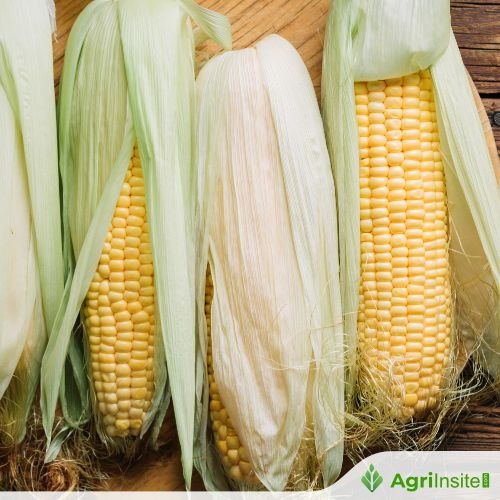Sharp rise in maize diversion for ethanol blending kicks-off concern

India’s maize use for ethanol has surged from 8 to 128 lakh tonnes in two years, now over 34% of total output. Experts warn this threatens food security, animal feed supply, and crop diversity. The ethanol policy, pricing maize ethanol higher than sugarcane-based, may also undermine sustainable fuel goals.
The sharp increase in the diversion of maize for ethanol production in India under the Ethanol Blending Programme has raised concern across agriculture, nutrition and trade sectors, as experts warn of serious implications for food security, feed availability and crop sustainability.
Maize, a critical component of India’s food and feed economy, is being increasingly used as a feedstock for ethanol. Estimates show that demand for maize for ethanol has risen from 8 lakh tonne in 2022–23 to a projected 128 lakh tonne in 2024–25. This accounts for over 34 per cent of the country’s total maize production of 390 lakh tonne this year.
India, unlike ethanol giants such as the US and Brazil, does not produce maize in surplus. The recent rise in ethanol-linked maize demand has already forced India to import about 8 lakh tonne in 2024–25, up sharply from 1.27 lakh tonne the previous year.
“This trend is unsustainable. We are not only distorting our crop economy but also undermining the very goal of the ethanol programme—reducing import dependency,” said a senior agriculture economist.
Maize plays a dual role in India’s agricultural system as it is both a food staple in tribal and rural regions and the primary feed grain for the poultry and livestock sectors.
Nearly 60–65 per cent of animal feed comprises maize and the poultry sector alone consumes 47 per cent of the country’s total maize output. The rising cost of feed, driven by ethanol-linked maize diversion, is already pushing up prices of poultry products, say industry experts.
Nearly 77 per cent of India’s maize is grown in rain-fed conditions during the kharif season, making it vulnerable to erratic rainfall and input-intensive cultivation. Expansion of maize area is already being seen in major states such as Madhya Pradesh and Maharashtra where Kharif maize acreage rose by 50 per cent and 94 per cent, respectively, in 2024–25.
The shift has come at the expense of other vital crops such as pulses, soybean and oilseeds. India imported 6.87 million tonne of pulses last year, the second-highest volume ever recorded. Edible oil imports continue to cover about 66 per cent of domestic demand.
A separate concern is the pricing disparity in ethanol itself. Ethanol derived from maize currently fetches ₹71.86 per litre, while sugarcane juice-based ethanol—considered more efficient and environmentally friendly—is priced at ₹65.61 per litre. Experts say the current pricing structure disincentivises more sustainable alternatives.
Policy watchers suggest that maize should be used for ethanol only in surplus years and regions and after ensuring food and feed needs are met.
To Read more about Maize News continue reading Agriinsite.com
Source : The Hindu Business line
















